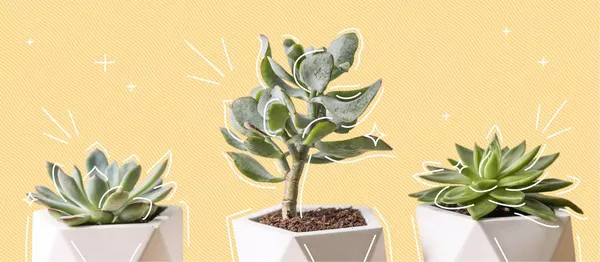Dolphin succulents, also known as Senecio peregrinus, have gained popularity for their striking resemblance to leaping dolphins. These unique succulents are not only visually captivating but also require specific care to thrive. One crucial aspect of dolphin succulent care is proper watering. Succulents, by nature, have adapted to thrive in arid conditions, and understanding their specific watering needs is essential for maintaining their health and beauty. In this article, we’ll explore the art of watering dolphin succulents, addressing the frequency, techniques, and signs to ensure your succulents flourish in their distinctive form.
Understanding the Nature of Dolphin Succulents
Dolphin succulents belong to the Senecio genus and are a hybrid of Senecio rowleyanus (String of Pearls) and Senecio articulatus (Candle Plant). Like other succulents, dolphin succulents have evolved to thrive in arid environments with sporadic rainfall. Their leaves, which resemble miniature leaping dolphins, store water, allowing them to withstand periods of drought. Mimicking their natural habitat is key to fostering the health and vibrancy of dolphin succulents.
The Role of Well-Draining Soil
One of the foundational elements in the care of dolphin succulents is the choice of soil. Well-draining soil is paramount for succulents, as it prevents water from accumulating around the roots, reducing the risk of root rot. A mix specifically formulated for succulents or cacti, combined with perlite or coarse sand, facilitates adequate drainage. This soil composition ensures that water moves through the root zone efficiently, preventing waterlogged conditions that can be detrimental to succulents.
Watering Frequency: Finding the Right Balance
The frequency of watering dolphin succulents is a critical factor in their care. Succulents, including the unique dolphin variety, prefer infrequent but deep watering. Watering should be done when the top inch of the soil feels dry to the touch. As a general guideline, aim to water your dolphin succulents every 10-14 days, adjusting based on factors such as the climate, season, and indoor conditions.
See Also: How to replant a dying succulent?
Environmental Factors: Tailoring Watering to Conditions
Environmental factors play a significant role in determining the ideal watering frequency for dolphin succulents. In warmer climates or during the growing season, succulents may require more frequent watering. Conversely, in cooler temperatures or during the dormant season, when growth slows down, less frequent watering is advisable. Pay attention to the specific needs of your dolphin succulents, observing how they respond to different environmental conditions, and adjust your watering routine accordingly.
Morning Watering: Optimal Timing
The timing of watering sessions can impact the overall health of dolphin succulents. Morning watering is generally recommended for succulents, including the dolphin variety. Watering in the morning allows the soil to absorb moisture before the heat of the day, reducing the risk of fungal issues that can arise from prolonged leaf wetness. Morning watering also ensures that the succulents have ample time to dry out, promoting a healthy root environment.
Watering Techniques: Deep Soak and Avoiding Wet Foliage
When watering dolphin succulents, the deep soak method is preferable. Water the soil thoroughly until you see water draining from the bottom of the pot. This ensures that the roots receive sufficient moisture and helps flush out excess salts. Avoid shallow watering, as it encourages the development of a shallow root system, making the succulents more susceptible to drought stress.
It’s crucial to water the soil directly and avoid wetting the foliage of dolphin succulents. Water droplets on the leaves can magnify sunlight, potentially causing sunburn or damage to the delicate surface of the succulents. Direct the water at the base of the plant, allowing it to reach the roots without wetting the leaves.
Signs of Underwatering and Overwatering: A Guide for Adjustments
Monitoring your dolphin succulents for signs of underwatering or overwatering is essential for adjusting your watering routine. Underwatering may manifest as shriveled or wrinkled leaves, indicating that the succulents are not receiving enough moisture. In such cases, increase the frequency of watering while ensuring proper drainage to address the issue.
On the other hand, overwatering can lead to root rot, a common problem in succulents. Signs of overwatering include yellowing or softening of leaves. If you observe these symptoms, reduce the frequency of watering and allow the soil to dry out completely between sessions. Adjusting your watering routine based on the specific needs of your dolphin succulents ensures a healthy and thriving plant.
Seasonal Adjustments: Dormancy and Growth Periods
Dolphin succulents, like many succulent varieties, go through periods of dormancy and active growth. Understanding the seasonal needs of your succulents is crucial for tailoring your care routine. During the growing season, typically in spring and summer, dolphin succulents may require more frequent watering to support their active growth. As the dormant season approaches, reduce the watering frequency, allowing the succulents to experience a drier period.
Humidity Considerations: Indoor Environments
If you are keeping dolphin succulents indoors, the humidity levels of your home can influence their watering needs. Indoor environments with artificial heating or air conditioning may reduce humidity, necessitating more frequent watering. Additionally, indoor succulents may benefit from occasional misting to create a microclimate with slightly higher humidity around the plants.
Choosing the Right Watering Container
The choice of the container also plays a role in the watering routine of dolphin succulents. Ensure that the pot has drainage holes to allow excess water to escape. Using a container with good drainage promotes a healthy root system and prevents waterlogged conditions. Selecting a pot with the appropriate size for your succulent also helps maintain the right balance between water retention and drainage.
Conclusion
In conclusion, the key to nurturing thriving dolphin succulents lies in understanding and meeting their specific watering needs. The art of watering involves finding the right balance, adjusting based on environmental conditions, and observing your succulents for signs of hydration or stress. By providing well-draining soil, deep soaking, and adjusting your watering routine to seasonal and environmental factors, you can ensure that your dolphin succulents display their unique beauty and remain vibrant and healthy in their distinctive leaping form.

